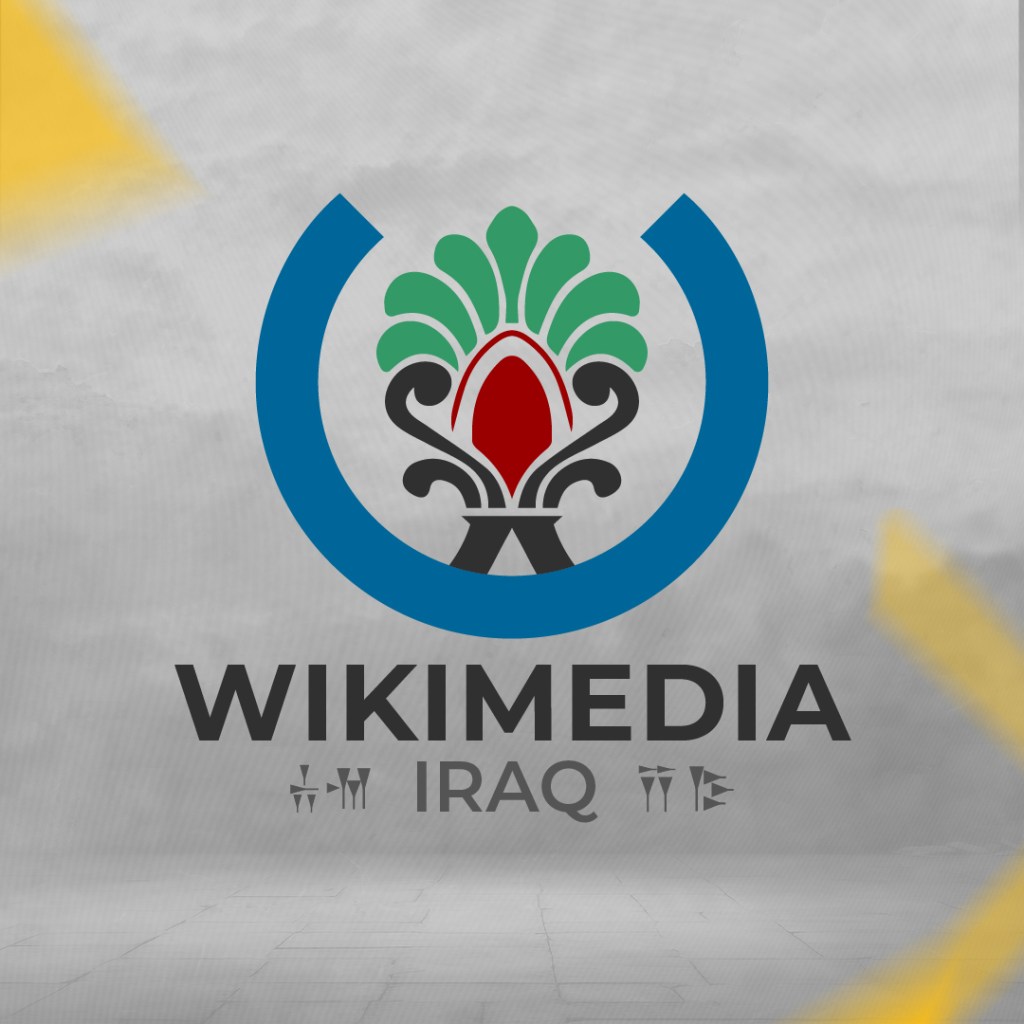
In today’s fast-paced digital world, visuals play a powerful role in communication, especially when engaging with youth. Youth are drawn to compelling, modern, relatable designs that capture their attention and spark their curiosity. A strong visual identity conveys messages more effectively and creates a sense of connection and belonging.
For Wikimedia Iraq, focusing on impactful visuals is crucial for inspiring the next generation to engage with our mission, contribute to free knowledge, and see themselves as part of a vibrant, global movement.
We are excited to share the new identity of the Wikimedia Iraq User Group with you.
Since our user group was established in 2015, we’ve used a simple logo to represent the group’s connection to Iraq.
This year, as we revive the group after years of limited activity, we decided to take a bold step forward by creating a visual identity that truly embodies our mission and inspires others.
We started with two key questions:
- What theme resonates deeply with all Iraqis?
- What single symbol could represent our identity and values as a user group?
In answering these questions, we had to ensure our identity also connected meaningfully to Wikimedia’s mission and projects.
Fortunately, we draw from one of the oldest and most significant civilizations on Earth: Mesopotamia, the cradle of humanity and writing itself. Specifically ancient southern Iraq, at Ur (2000–4000 BCE), the first written words were inscribed on clay tablets—a groundbreaking moment in human history.
The Sumerians used clay tablets to record information, marking the birth of written communication. Over millennia, humanity has evolved from clay tablets to digital tablets, transitioning from the physical to the virtual realm of knowledge-sharing. This progression perfectly reflects the spirit of Wikimedia projects, which strive to make knowledge universally accessible.
Thus, our new slogan emerged:
“From Clay Tablets to Digital Tablets.”



You can see in the middle the answer to the second question: how could we represent this theme with a single symbol?

We chose Babylon, a world-renowned historical site in Iraq, and specifically its legendary Hanging Gardens. The gardens, with their iconic date palms, symbolize unity and growth, nurtured by the rivers that sustain them. For our logo, we selected the Babylon palm tree as the central symbol, encircled by the flowing rivers that keep it alive, representing the sustenance of knowledge.
To further tie this visual identity to Wikimedia, we integrated elements of cuneiform into the design. You’ll notice how these shapes and symbols appear throughout our materials, including the logo. For example, the left side of the word “Iraq” subtly forms “WM” for Wikimedia, while the right side forms “IQ,” representing Iraq.





This effort was a collaborative achievement, blending creativity and teamwork. Our user group members worked closely with a professional designer to bring this vision to life, resulting in a vibrant and meaningful identity that reflects both our heritage and our commitment to the Wikimedia mission.
After presenting the visual identity at various events, we asked attendees for their thoughts on the Wikimedia Iraq User Group and the Wikimedia Foundation. Their responses were both inspiring and thought-provoking:
“As we belong to the civilization that started the knowledge, I feel the importance of Iraqis in the Wikimedia movement, and that is now pushing me to contribute more to knowledge sharing.” Teeba Ali – Newcommer
“From a designer’s perspective, I see the rounded blue half-circle representing Wikimedia and the palm as the user group. It’s as if the foundation feeds the tree (the user group) to sustain its growth and contributions.” Event Attendee
These reflections made us realize that we had achieved more than just building an identity—we had created an infinite vision. Our visual identity is not just a design; it’s a connection point for people to describe, relate to, and find meaning in the Wikimedia Iraq User Group’s mission.
In a country rich with social, ethnic, religious, and cultural diversity, creating a visual identity that represents everyone was a challenging task. Yet, we found inspiration in the deep-rooted truth that we all share the same land and the same history—a unifying bond that transcends our differences.
We’re proud to share this new identity with you and look forward to continuing our journey of connecting history, culture, and free knowledge.


Can you help us translate this article?
In order for this article to reach as many people as possible we would like your help. Can you translate this article to get the message out?
Start translation